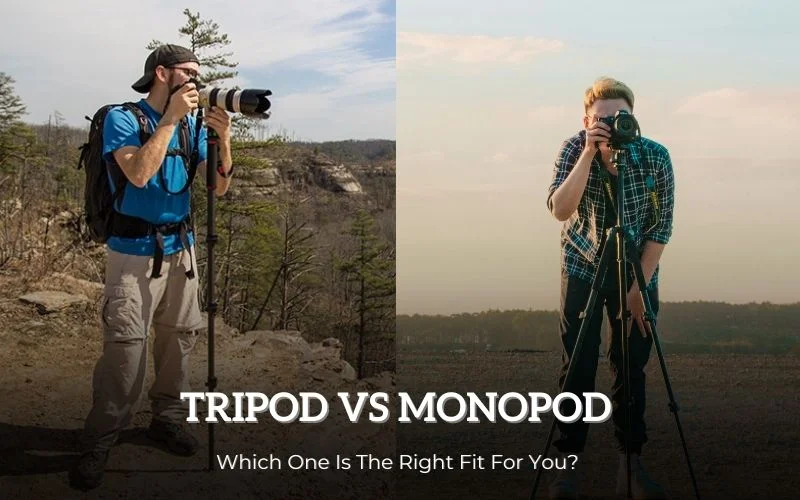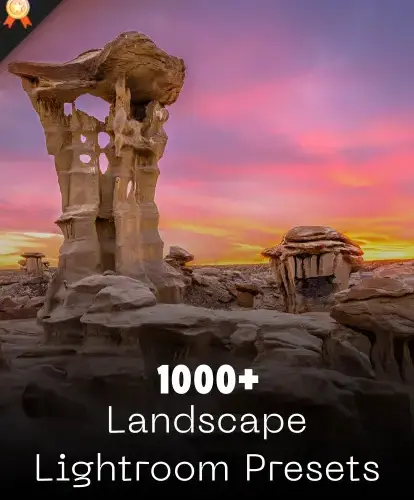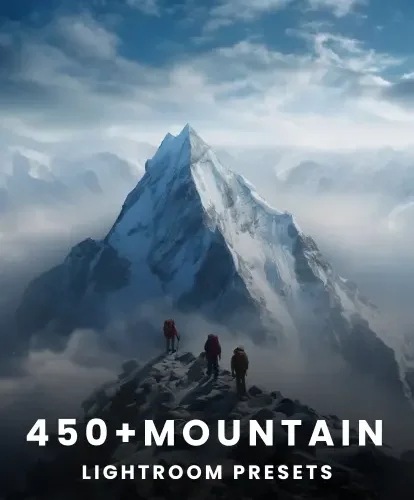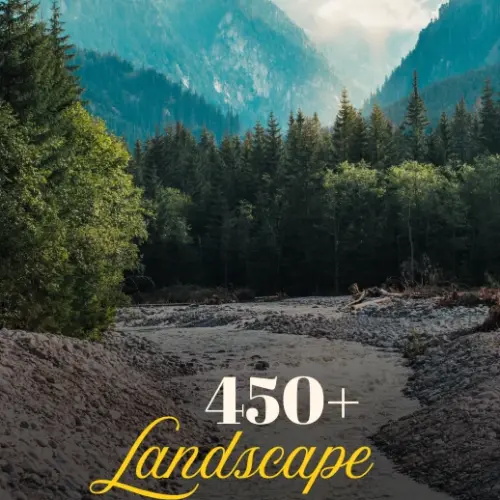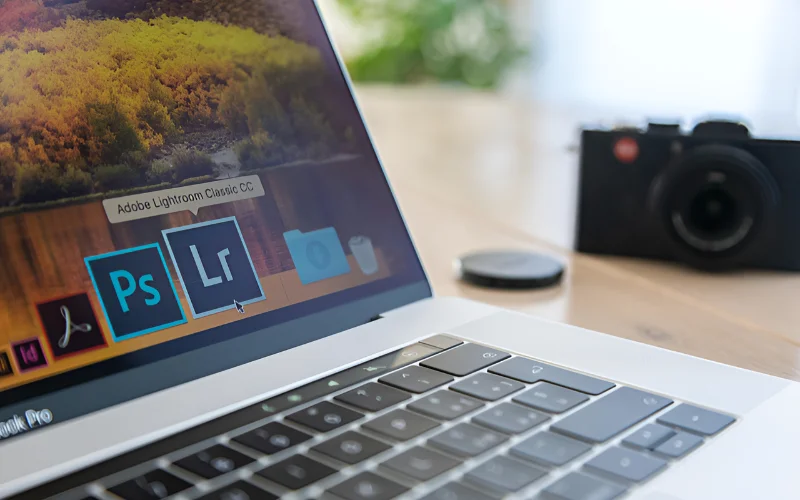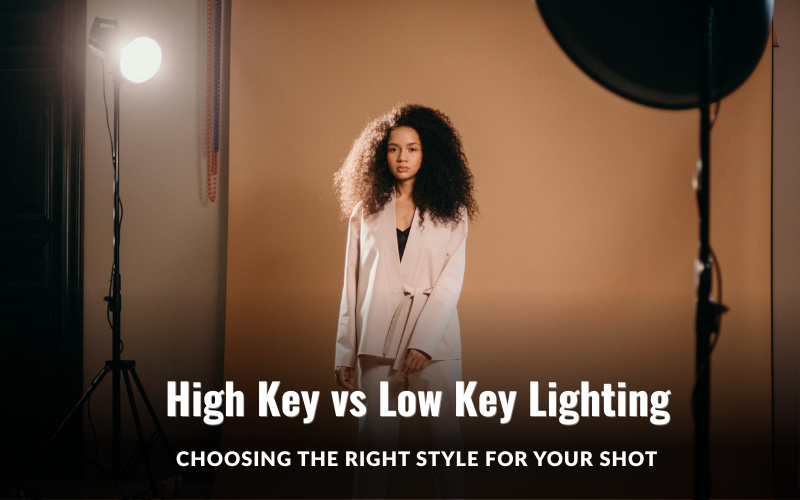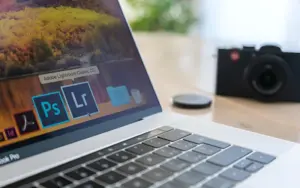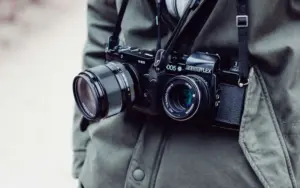If you’ve ever found yourself torn between buying tripod vs monopod, you’re not alone. Both are essential tools for photographers, but they shine in very different situations.
One gives you rock-solid stability, while the other gives you unmatched mobility. Choosing between the two isn’t about which is “better” overall. It’s about which one works best for the kind of photography you do.
Let’s break tripod vs monopod down in simple terms and help you make the right choice.
Table of contents
What is a Tripod?
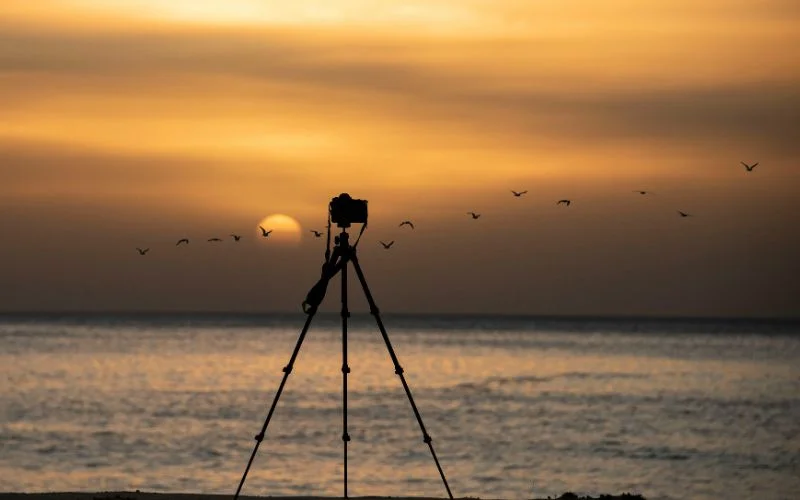
A tripod has several uses. At its most basic, it is just a portable stand to stabilize the camera when shooting at slower shutter speeds. It is also a way to ensure you have sharper photos.
However, a tripod is also a helpful tool for achieving a good composition. When the camera is on a tripod, you are calculating more about the shot you are taking.
A tripod slows you down and makes you think about the shot. Finally, a tripod is a good way to achieve some special effects or unusual images.
A tripod will help you achieve long exposure shots or creating a panorama because you can keep the camera still when shooting photos, which is difficult sometimes when holding the camera in your hand.
Advantages of a Tripod Over a Monopod
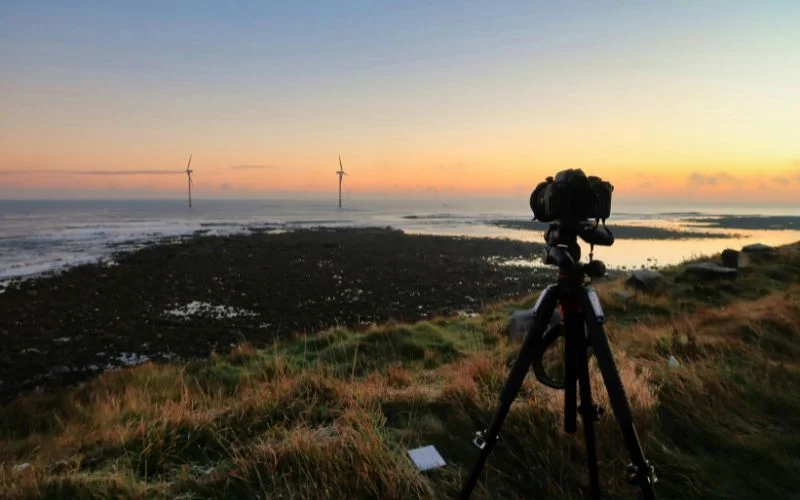
- You can use much slower shutter speeds, even several seconds or minutes, which opens up lots of creative effects like light trails or silky water.
- A tripod keeps your composition locked in place, so you can frame your shot perfectly and just wait for the right moment.
- It keeps the camera at a fixed distance from your subject, avoiding small shifts that could cause blur or missed focus (especially with close-up shots).
- A sturdy tripod can stand on its own while you grab other gear. You just have to make sure it’s balanced and secure first.
- With a tripod, you can set up remote shooting or even use your camera like a trap to capture shots without being right there.
You might also like: What is the Rule of Thirds in Photography?
What is a Monopod?
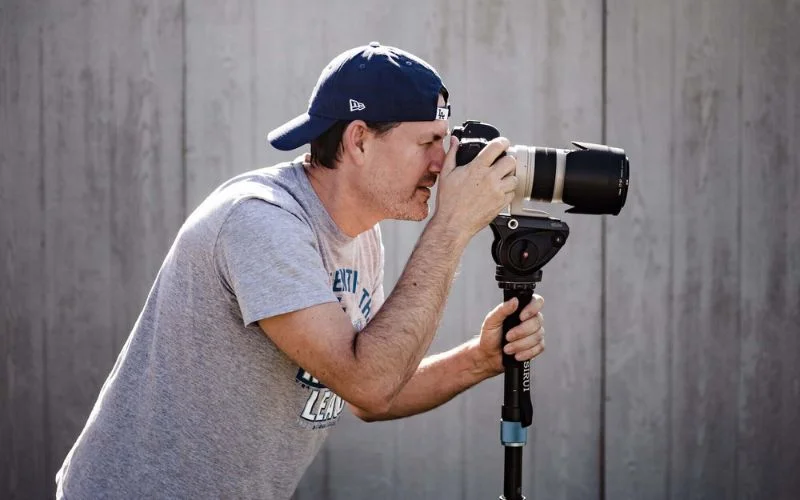
A monopod is simply a single leg, as opposed to a tripod which has three. Monopods usually include telescopic sections that you can fold up when not in use. Monopods can dangle from a bag or wrist when not in use, and can be ready to set up in a moment’s notice to give you the added support of a single leg.
A monopod won’t add the stability to light you up for super-long exposures, but it can provide wiggle room with shutter speeds at a moment’s notice.
A monopod isn’t a piece of kit you will necessarily use every day, but considering them for a short period of support and the addition of portable flexibility for following subjects in movement is worth thinking. And you are only buying one leg instead of three, so they are a lot cheaper too!
Advantages of a Monopod Over a Tripod
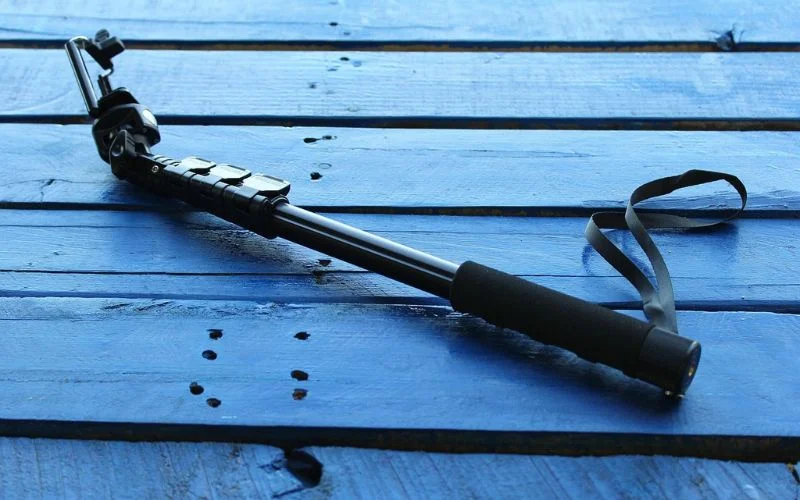
- A monopod is more lightweight and compact than a tripod, which has three legs.
- Setting the monopod in the proper location and being able to move it quickly to different locations makes a greater relative difference between success and failure.
- If you’re in rugged terrain or thick brush, it will be much easier to use a monopod.
- The monopod permits more effortless movement of the camera by simply letting you spin the camera around side-to-side, and (to some extent) allows you to tilt left and right. Therefore, you won’t need as large a gimbal head.
- When being fitted into a spot of photographers, crowding the location as a group, it will be much easier to fit a monopod as compared to a tripod.
- On a canoe or a zodiac, moving a monopod when there is a tilt is easier than moving the tripod (even with a gimbal head).
- Finally, a monopod can also serve as a walking stick.
You might also like: AI Tools for Photographers to Save Time and Boost Creativity
Tripod vs. Monopod: Quick Comparison Table
| Factor / pointer | Monopod | Tripod |
| Basic definition / # of legs | Single-leg support (one telescoping leg). | Three-legged support (stable triangular base). |
| Stability | Gives some stabilization vs handheld but still needs user for balance. | Rock-solid, hands-free stability; best for long exposures and precision. |
| Portability / weight | Much lighter, slimmer, easier to carry; good for travel/long walks. | Bulkier and heavier (even travel tripods still larger than monopods). |
| Setup speed / deployment | Very fast: seconds to set up. | Slower to set up; takes time to position and level. |
| Hands-free use | Requires user support | Fully hands-free (you can step away, swap filters, remote trigger, etc.). |
| Cost | Generally much cheaper for similar build quality. | Typically more expensive (good tripods cost considerably more). |
| Precision / composition control | Less suited to very precise framing that requires micromovements. | Excellent: enables methodical composition and identical framing across frames. |
| Durability & maintenance | Simpler mechanics; usually fewer maintenance points. | More parts and moving components; more potential maintenance needs. |
| Weight capacity / compatibility | Many monopods support heavy lenses, but check rated load. | Tripods normally offer higher safe load ratings (especially pro tripods + gimbal heads). |
When To Use Tripod vs Monopod
1. Landscape photography
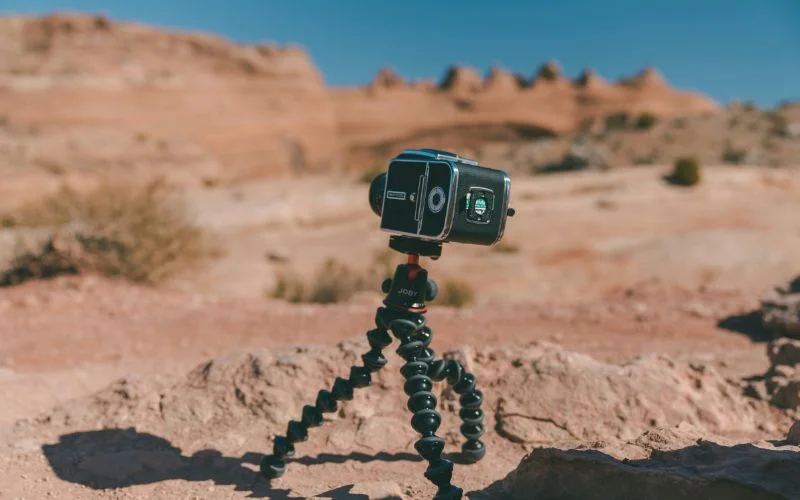
Since landscapes can often require small apertures and long shutter speeds, tripods are a much better option than shooting handheld. The advantage is maintaining a low ISO, reducing noise, and capturing sharper images.
A tripod also allows you to get creative and make effects like silky water and starbursts by keeping the camera steady over longer exposures.
Obviously, if you are traveling light, a monopod can help, but if you are serious about landscape photography (especially for landscapes, reflections, or time-lapse sequences), a tripod is still the method of choice.
2. Long exposure & Low-Light Photography

Long-exposure photography encompasses the entire spectrum of nighttime photography, down to capturing long, silky exposures of water. The element of success and stabilization of an image using a slow shutter speed is a tripod to stabilize the camera. Simply put, it’s very hard to remain stable with a long shutter speed using a monopod, which is why tripods are the best equipment for long exposures.
When shooting at night, you’ll find a shutter speed of 30 seconds or longer. An average photographer shooting handheld will have a nearly impossible task, and almost certainly introduce camera shake into the images because of long exposure.
This is where a tripod comes into play since holding a camera monopod for an extended period can still produce a fuzzy image. A tripod is more useful since the weight in the middle of the tripod keeps the camera still when shooting at a very slow shutter speed.
You might also like: How To Make Photos Look Like Film: Tips & Tricks
3. Wildlife Photography
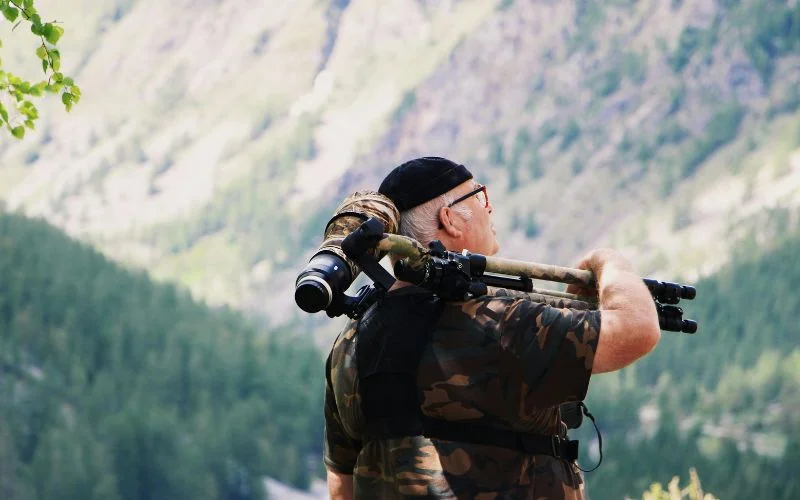
For stationary or semi-stationary situations like waiting in a blind or near a nest, a tripod, especially with a gimbal head, can be extremely valuable for the purpose of keeping a heavy telephoto lens steady, or locked in position, for long periods of time.
But if you are frequently moving back and forth or through the field, a monopod is faster to use and a lot easier to carry around. Many shooters will keep both available for wildlife photography. A tripod for when you can wait patiently, and a monopod for fast or lively, unpredictable action.
4. Wedding & Portrait Photography
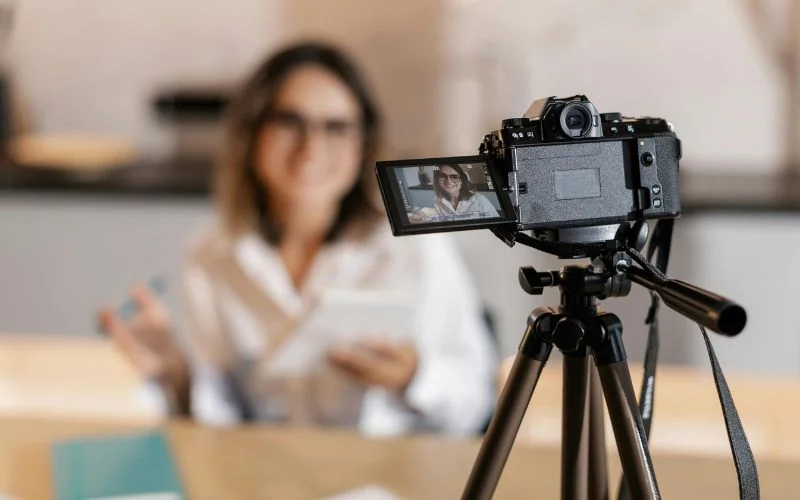
Wedding photographers can use tripods or monopods to create beautiful wedding images. The ceremony is often the most important part of the day, and oftentimes the lighting is simply too low to be able to hold the camera when photographing the ceremony.
The monopod gives you that little extra bit of stability without the setup time, which means you don’t miss photographs.
For the bride and groom photos, a tripod is typically your best equipment option. These images are often near sunset to capture the warm golden light as the sun is low on the horizon. Again, great photos, but so little light and constantly changing.
You might also like: JPEG vs PNG: Which Image Format Should You Use?
5. Sports Photography

The task of sports photography revolves around speed, agility, and long glass. A monopod allows you to support the weight of your gear while following the athlete, especially in crowded and tight sideline situations.
Tripods can get in the way and be a tripping hazard. That being said, most sports photographers use a monopod because it gives you the stability of a tripod, while allowing ease of movement.
6. Macro Photography

Macro photography is all about portraying the world of small life in front of us with a 1:1 ratio. The detail required in order to have sharp images, requires that your camera is held very still. If you have a heavier camera it will be hard to keep it upright without the other legs.
Since many macro objects are close to the ground, a common technique for photographers is to invert their tripods so the camera is actually upside down, and therefore bringing the lens and camera closer to the subject. This process is impossible to do on a monopod without causing any blurring.
7. Product Photography
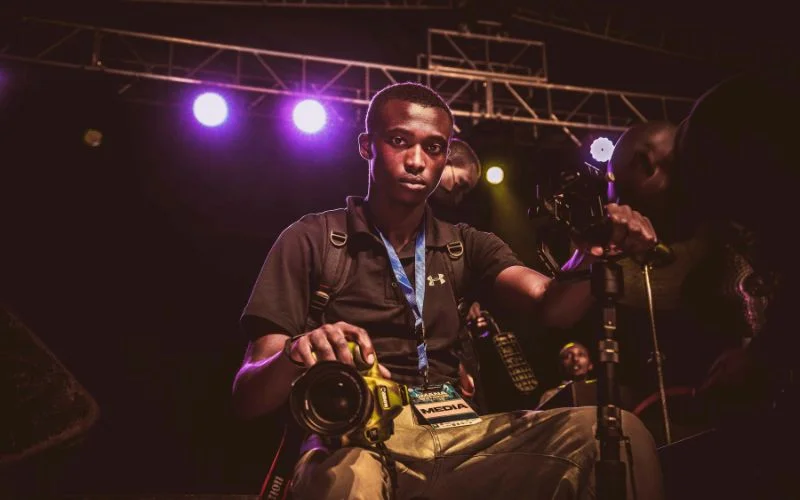
A tripod is optimal for product photography because you will most likely be photographing a stationary subject and trying to minimize the loss of detail in the photograph.
More often than not there is not a lot of movement in the photograph, so it makes sense to utilize a tripod. You are also indoors, or in a controlled environment like a studio, where you can control and manipulate the environment that is in the frame and achieve a superior outcome.
That said, a monopod will be just fine for product shots, as a tripod eases the process of taking the shot.
You might also like: Easy iPhone Photography Tips Every Beginner Should Know
8. Videography
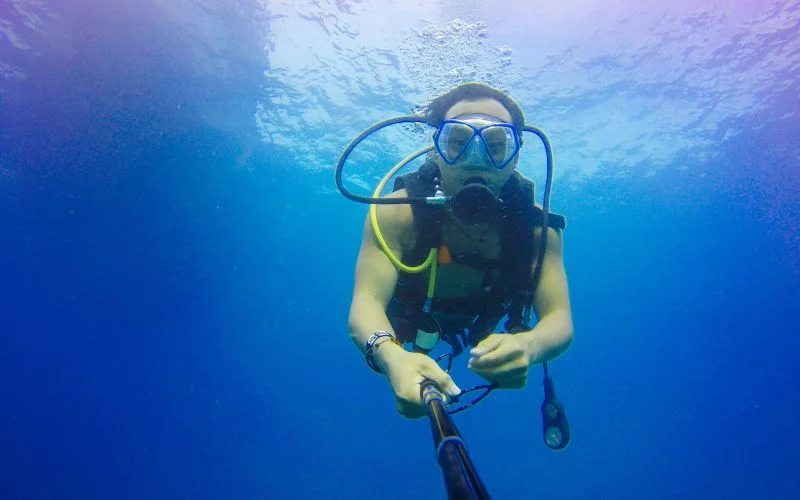
For run-and-gun documentary-style shooting, a monopod with a fluid head gives you smooth tilts and pans while allowing you to remain mobile.
With lighter mirrorless kits, this achieves a balance of stability and mobility. But with bigger cinema cameras and heavier lenses, you need a tripod and a strong fluid head.
Tripod vs Monopod: Final Verdict
Go for a tripod if you’re shooting landscapes, long exposures, low light scenes, macro shots, product photography, or posed portraits. Pick a monopod if you’re into sports, fast-moving wildlife, weddings, or want smoother handheld video.
Honestly, it’s not about one being “better” than the other. It depends on your style and gear when it comes to choosing between tripod vs monopod. Tripods give you rock-solid stability, while monopods are all about speed and portability.
If you’re using a lighter camera, avoiding heavy lenses, or not doing long exposures, a monopod might be all you need. But if you’re shooting at night, in low light, or experimenting with things like star trails, a tripod is a must. And if weight is the issue, look into travel tripods or carbon-fiber ones.
FAQs On Tripod vs Monopod
Q.1 Is a monopod better than a tripod?
Ans. Not really. They’re made for different needs. A monopod is great when you want to move quickly, like during sports or wildlife photography. A tripod is better when you need your camera to stay completely steady, like for landscapes, long exposures, or product shots.
Q.2 Can I use my tripod as a monopod?
Ans. Some tripods have a detachable leg that converts into a monopod. If yours doesn’t, you’ll need to buy a separate monopod for that lightweight, mobile setup.
Q.3 Can I carry a monopod on a plane?
Ans. Yes, monopods are usually allowed in both carry-on and checked luggage. Still, it’s a good idea to double-check with your airline’s rules before flying.
Q.4 Which one is easier to carry while traveling?
Ans. A monopod is lighter, slimmer, and quicker to pack. Tripods are bulkier, though travel tripods are designed to be more compact.
Q.5 Can a monopod stand on its own like a tripod?
Ans. No, a monopod always needs your support. Some models have small fold-out feet, but they still can’t stand entirely on their own the way a tripod does.
Like this post? Check out more amazing photography content here.
